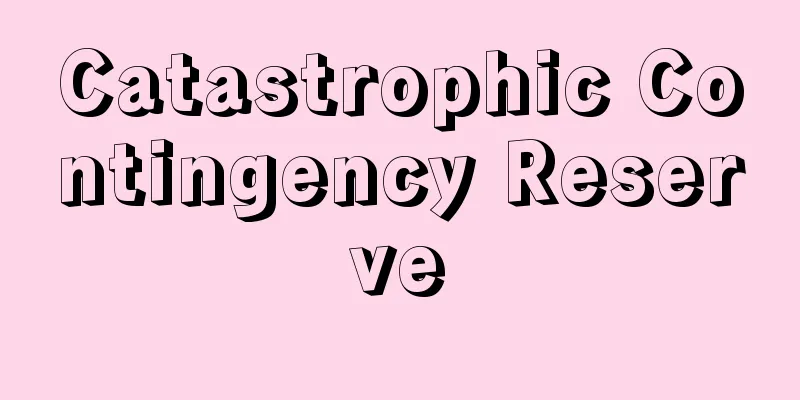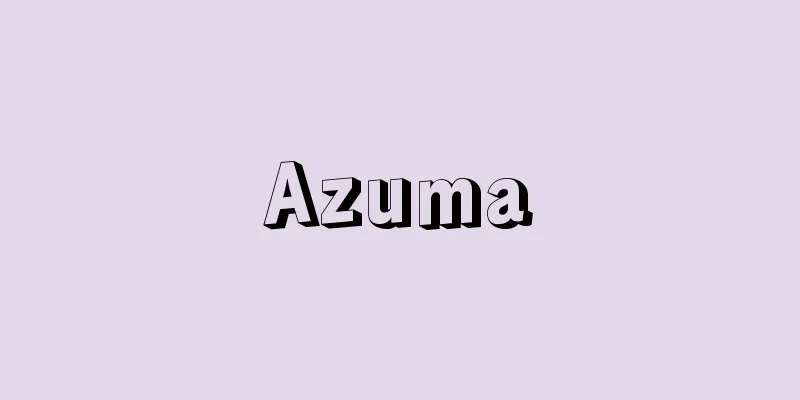Tokumi Donya

|
During the Edo period, this was a wholesale association formed by Edo wholesalers who handled the so-called "downstream cargo" goods sent from Osaka to Edo. The Higaki Kaisen ships were in charge of shipping between Osaka and Edo, but there was a lot of corruption, such as boatmen and captains faking shipwrecks and embezzling cargo. Edo merchant Osakaya Ihei then took the initiative, and in 1694 (Genroku 7), the wholesalers banded together to strictly manage matters such as shipwreck procedures, rather than leaving them up to the shipwreck wholesalers, and formed the Ten Groups of Wholesalers Association. The ten groups and the products they handled were the Lacquerware Stores Group (lacquerware), Uchimata Group (silk, thick materials, ginned cotton, small items, Hina dolls), Toricho Group (small items, thick materials, hardware, lacquerware, forging), Yakushuden Group (medicinal materials), Kugidana Group (nails, iron, copper items), Cotton Stores Group (cotton), Omote-dama Group (tatami mat coverings, blue mats), Kawagishi Group (water oil, ginned cotton), Kamida Group (paper, candles), and Sake Stores Group (sake). Products of this type and goods that came into Edo from outside Osaka were outside the scope of the Ten Groups of Wholesalers. Each of the Ten Group wholesalers set events for itself, and each group took turns performing major events. They also appointed seal officials to control affairs related to ships and handle damage caused by shipwrecks, so the Hishigaki Kaisen essentially became the same as the Ten Group wholesalers' own ships, and they exercised a powerful monopoly over the majority of the downstream cargo. When it was first established, it was an internal group, but during the Kyoho period (1716-36), it became a stock association officially recognized by the shogunate, and its membership increased. However, in the late Edo period, new Edo merchants appeared who broke the monopoly of the Jugumi and traded with Kamigata (Kamigata), and the Hishigaki Kaisen declined under the pressure of the rise of barrel shipping. Then, Sugimoto Mojuro of Edo became the head of the Jugumi, and in 1813 (Bunka 10), he reorganized the Jugumi into 65 Hishigaki Kaisen Cargo Wholesaler Associations, and paid huge amounts of money to the shogunate to strengthen his monopoly. It was temporarily abolished when the stock associations were disbanded during the Tenpo Reforms, but was re-established in 1851 (Kaei 4), and was eventually abolished with the arrival of the Meiji Restoration. In addition, in Kawagoe, Musashi Province (Kawagoe City, Saitama Prefecture), a ten-group organization modeled after the Edo one was formed in 1806 (Bunka 3), and one member was selected from each group to manage and operate the major events. They were classified as the Fourth Group (Sake Group), the Fifth Group (Dried Food Group), the Seventh Group (River Fish Group), the Ninth Group (Scrap Iron Group), and the Tenth Group (Lumber Group), but the details are unknown, and there was no limit to the number of shares. [Masuo Murai] [Reference] |Source: Shogakukan Encyclopedia Nipponica About Encyclopedia Nipponica Information | Legend |
|
江戸時代、大坂から江戸に送られてくる商品いわゆる「下(くだ)り荷物」を取り扱う江戸問屋がつくった問屋仲間。大坂―江戸間の海運にあたったのは菱垣廻船(ひがきかいせん)であったが、船頭や水主(かこ)が海難を装って荷物を横領するなど不正が多かった。そこで、江戸商人大坂屋伊兵衛が発起人となり、問屋が結束して難船後の処置などを船問屋任せにせず、問屋側が厳しく管理することとして、1694年(元禄7)に十組問屋仲間を結成した。十組とその取扱商品は、塗物店(ぬりものだな)組(塗物類)、内店組(絹、太物(ふともの)、繰綿(くりわた)、小間物(こまもの)、雛(ひな)人形)、通町組(小間物、太物、荒物、塗物、打物)、薬種店組(薬種)、釘店(くぎだな)組(釘、鉄、銅物類)、綿店組(綿類)、表店組(畳表、青莚(あおむしろ))、川岸(かし)組(水油、繰綿)、紙店組(紙、蝋燭(ろうそく))、酒店組(酒)である。以上のほかの種類の商品、およびこの種類の商品でも大坂以外から江戸に入る荷物は十組問屋の取扱い範囲外である。十組問屋は組ごとに行事を定め、各組は順次に大行事を勤め、また極印(ごくいん)元を定めて廻船に関する事務を支配し、海難の損害処理などを行ったので、菱垣廻船は実質上十組問屋商人の手船同様になり、下り荷物の大部分に対して強大な独占力を発揮した。 成立の当初は内分の仲間であったが、享保(きょうほう)時代(1716~36)には幕府公認の株仲間となり、構成員も増加した。しかし江戸後期に及んで十組の独占を破って上方(かみがた)と取引する新興の江戸商人が現れ、樽(たる)廻船の興隆などに圧迫されて菱垣廻船も衰退した。そこで江戸の杉本茂十郎(もじゅうろう)が十組頭取となり、1813年(文化10)改めて菱垣廻船積問屋仲間65組として十組を再編成し、幕府に巨額の冥加金(みょうがきん)を上納してその独占力の補強を図った。天保(てんぽう)の改革の株仲間解散令で一時廃止されたが、1851年(嘉永4)再興、やがて明治維新を迎えて廃止された。 なお、武蔵(むさし)国川越(かわごえ)(埼玉県川越市)にも江戸に倣った十組仲間が1806年(文化3)に結成され、各組から1名ずつ選出された大行事が管理運営にあたった。四番組(酒仲間)、五番組(乾物仲間)、七番組(川魚仲間)、九番組(古鉄屑(ふるてつくず)仲間)、十番組(材木仲間)とされているが、詳細は不明であり、株数の制限もなかった。 [村井益男] [参照項目] |出典 小学館 日本大百科全書(ニッポニカ)日本大百科全書(ニッポニカ)について 情報 | 凡例 |
Recommend
Metempsychosis
…It is also written as “rinkai” or “reincarnation...
Happi coat - Happi
{A phonetic change of "hafuhi (happi)" o...
Daitokuji documents
These are medieval and early modern documents hel...
Yanagawa [city] - Yanagawa
A city in southern Fukuoka Prefecture. It was inco...
Canton [island] - Canton
An atoll belonging to the Phoenix Islands of the R...
Stepchild - Kakeisi
…In the end, these were just ways to advance the ...
The Weaver's Incident
In 1601 (29th year of the Wanli era), a popular an...
Yatappe of Seki - Yatappe of Seki
Hasegawa Shin wrote this play for Shin Kokugeki, w...
Buchenwald (English spelling)
One of the concentration camps established by the ...
Milwaukee
Wisconsin is the largest city in the state, locat...
Funori (seaweed) - Funori (English spelling) Gloiopeltis
It is a seaweed of the family Funoriaceae in the o...
Alain-Duchérène type spinal progressive muscular atrophy - Alain-Duchérène type spinal progressive muscular atrophy
...The disease progresses slowly, and although it...
Vserossiiskaya assotsiatsiya proletarskikh pisatelei
…Its official name is the Russian Association of ...
Ashram - Ashram
...There are many holy places, but the four most ...
Hattori Unokichi - Hattori Unokichi
Chinese philosopher and educational administrator...









